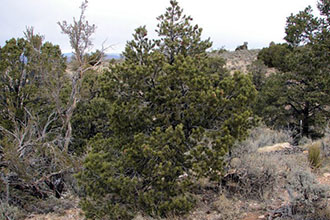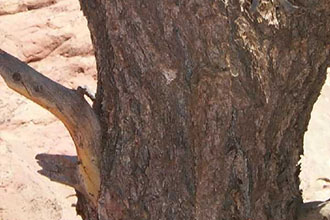Taxonomy: Kingdom - Plantae (plants). Subkingdom - Tracheobionta (vascular plants). Superdivision - Spermatophyta (seed plants). Division - Coniferophyta (conifers). Class - Pinopsida. Order - Pinales. Family - Pinaceae (pine). Genus - Pinus L. Species - Pinus edulis Engelm.
Ecology: Pinyon pine is intolerant of shade in all but the seedling stage of its growth. "Nurse plants" are sometimes required during this stage to protect the seedlings from excessive drying and heating. Pinyon-juniper stands have slow succession rates. Pinus edulis occurs as an early to late-seral or climax species. The general successional recovery after fire in dense stands of pinyon-juniper begins with the establishment of annuals, a stage that may peak in the 2nd and 3rd postfire years. A perennial grass stage follows, in which perennials are more abundant than annuals, with a shrub stage developing soon after. The re-establishment of trees during the shrub stage then leads to the pinyon-juniper climax, presuming no further fire occurrence. The edible seeds of Pinus edulis are gathered from native stands and marketed commercially.



